Supporting Patients With Guidance on Managing Pain Safely at Home

Understanding Chronic Pain and Its Impact
Chronic pain, often lasting beyond three months, can significantly affect individuals' quality of life. It may persist after injuries, illnesses, or medical procedures and varies in intensity and location. Managing this complex condition safely at home requires a comprehensive approach that includes medication oversight, lifestyle adjustments, and integrative therapies. This article explores practical guidance and resources available to support patients in navigating their pain management journey effectively and securely.
The Nature and Types of Pain: A Foundation for Management

What is acute pain versus chronic pain?
Acute pain is a sudden, sharp discomfort that usually serves as a warning of injury or illness. It tends to be short-lived, resolving as the underlying cause heals. Chronic pain differs as it lasts longer than three months, often persisting even after the initial injury or illness has healed. It may come and go but remains a common and challenging symptom, especially among populations like Gulf War Veterans.
What are common causes of pain?
Pain can stem from various sources including injuries, surgeries, and medical conditions such as arthritis and cancer. Acute pain often follows injury or surgery, while chronic pain may develop as a persistent condition or as a result of ongoing illness.
How is pain perceived by the body and brain?
Pain perception is a complex process involving pain receptors in the body, nerves transmitting signals to the spinal cord, and the brain interpreting these signals. Individual responses depend not only on the physical pathways but also on emotional and social contexts, making pain a highly personal experience.
How do emotional and social factors influence pain?
A person’s emotional well-being greatly affects their sensation and tolerance of pain. Stress, anxiety, and social isolation can amplify pain perception, while supportive social interactions and coping strategies can mitigate its impact. Managing these factors is crucial in improving overall quality of life for those experiencing chronic pain.
Choosing and Using Pain Medications Safely at Home
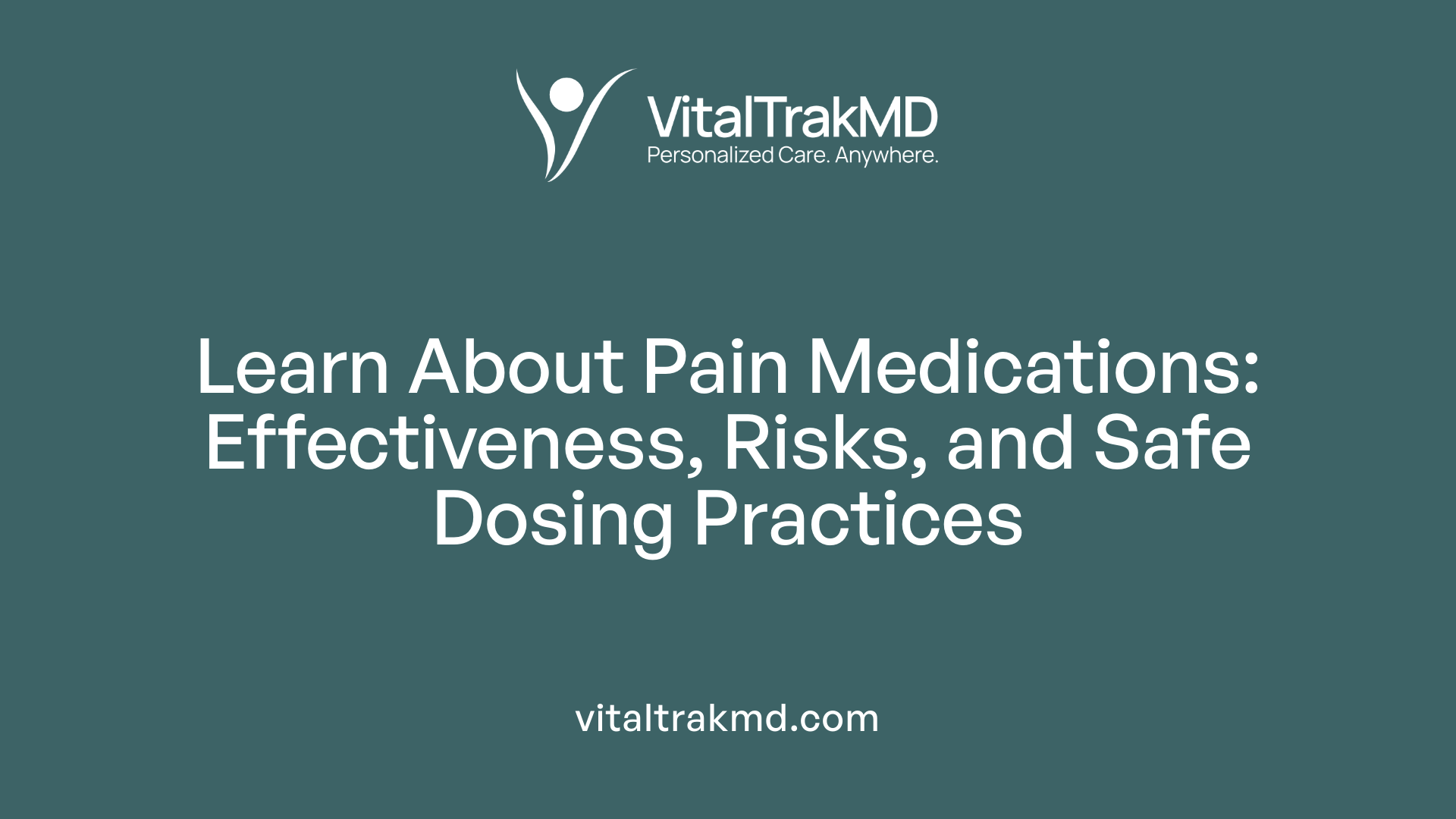
Types of pain medicines and how they work
Pain medications are designed to manage pain by targeting its underlying processes. Common types include paracetamol, aspirin, and non-steroidal anti-inflammatory drugs (NSAIDs), which reduce inflammation and relieve pain. Opioids work by blocking pain signals in the brain, while local anesthetics numb specific areas. Some antidepressants and anti-epilepsy drugs alter how pain is perceived.
Risks and side effects of pain medications
Long-term or improper use of pain medicines can lead to side effects such as liver damage, stomach ulcers, cardiovascular issues, drowsiness, and potential dependence. Because of these risks, continuous monitoring and consultation with healthcare providers are essential.
Importance of medical guidance for long-term medication use
Not all pain medications are suitable for prolonged treatment. Medical experts should choose and regularly review long-term pain management plans to ensure safety and effectiveness, especially for chronic pain conditions.
Safe dosing practices including pediatric considerations
Safe dosing is critical for effective pain management. Resources like the Pediatric Pain and Fever Dosing Guide provide weight-based dosing information for medications like acetaminophen and ibuprofen, helping parents administer the right doses safely. Following prescribed instructions and using medications consistently as directed is vital.
Over-the-counter medication precautions
Over-the-counter pain medicines should be used cautiously, particularly during pregnancy, in older adults, or individuals with chronic illnesses. Consulting healthcare providers before using these medicines helps avoid overdose and harmful interactions with other treatments.
By adhering to these guidelines, individuals can manage pain safely at home while minimizing risks associated with medication use.
Incorporating Non-Pharmacologic Approaches in Pain Management

Physical therapies like exercise, yoga, and Pilates
Physical activity is a cornerstone in managing chronic pain. Low-impact exercises such as walking, swimming, and rowing help strengthen muscles and improve overall health, which can reduce pain intensity. Yoga and Pilates offer gentle strength and flexibility training alongside breathing and posture control, making them effective for pain relief. Many Veterans access these programs through VA facilities, highlighting their recognized benefit.
Complementary therapies including acupuncture and massage
Complementary treatments provide additional pain relief without medications. Acupuncture, involving the placement of fine needles on specific body points, has been shown to alleviate chronic pain and is accessible through some Veterans Affairs services. Massage therapy, through techniques like rubbing and kneading muscles and joints, helps relax tense areas and reduce discomfort.
Use of heat and cold packs
Applying heat or cold packs is an easy, non-drug option that can soothe sore muscles and joints. Heat increases blood flow and relaxes tight muscles, while cold reduces inflammation and numbs sharp pain. These methods can be used at home safely for symptom relief.
Relaxation and mindfulness techniques
Mindfulness-based approaches, such as meditation and guided imagery, focus on calming the mind and lowering stress levels, which directly influence pain perception. Practicing relaxation techniques helps break the cycle of pain and emotional distress, improving overall well-being.
Distraction methods and guided imagery
Engaging in hobbies, social activities, or mentally focusing on positive images (guided imagery) can divert attention away from pain sensations. Distraction reduces the perceived intensity of pain and enhances emotional coping, supporting mental health alongside physical relief.
Incorporating these non-pharmacological approaches forms a holistic pain management plan that emphasizes gentle physical activity, alternative therapies, and mental wellness strategies. Veterans and others managing chronic pain benefit from combining these techniques with medical guidance to achieve safer, more effective relief.
The Role of Physical Activity and Exercise in Pain Reduction

Benefits of Low-Impact Activities for Chronic Pain
Physical activity is a vital component in managing chronic pain, especially low-impact exercises. These exercises are gentle on the joints and muscles, making them suitable for individuals experiencing ongoing pain. By engaging in such activities, Veterans and others with chronic pain can improve their overall mobility and reduce stiffness.
Strengthening Muscles to Improve Health and Reduce Pain
Strengthened muscles provide better support to the body's structure, which can alleviate stress on painful areas. Building muscle strength through regular, appropriate exercise helps improve posture, enhance function, and decrease the intensity of pain over time.
Examples of Suitable Exercises
Common low-impact activities beneficial for chronic pain management include walking, swimming, and rowing. Walking promotes cardiovascular health without overwhelming the body, swimming provides buoyancy that minimizes stress on joints, and rowing offers a full-body workout that can be adjusted to individual tolerance levels.
Balancing Activity to Avoid Overexertion
While exercise is beneficial, it is important to balance activity to prevent overexertion that might worsen pain symptoms. Pacing exercises and gradually increasing activity levels allow the body to adapt safely. Combining physical movement with rest periods ensures sustainable progress and pain relief.
By incorporating these exercise strategies, individuals with chronic pain can effectively manage symptoms and improve quality of life.
Psychological and Social Support Strategies
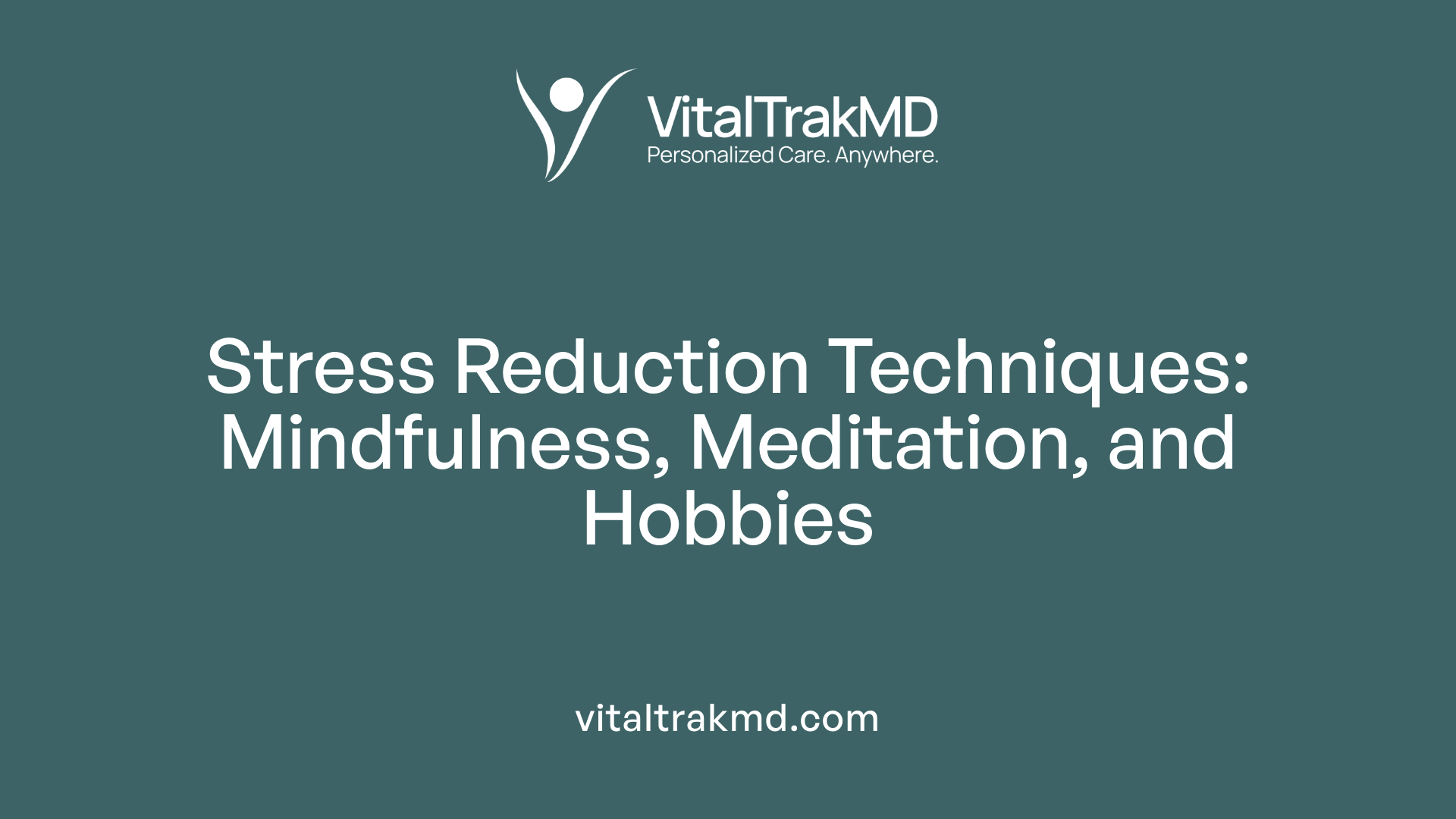
How Does Emotional Wellbeing Affect Pain Experience?
Emotional wellbeing plays a crucial role in how pain is experienced and managed. Feelings of stress, anxiety, or depression can intensify pain sensations, making discomfort feel more severe. Conversely, positive emotional health can buffer against pain's impact, helping individuals cope better with chronic conditions.
How Can Mindfulness and Meditation Reduce Stress?
Mindfulness and meditation are effective tools to manage stress, which in turn can lessen the experience of pain. These practices focus on calming the mind and increasing awareness of the present moment, which helps reduce anxiety related to pain and promotes relaxation. Veterans can benefit from programs offered by VA facilities that incorporate these techniques.
Why Is Maintaining Social Engagement and Hobbies Important?
Staying connected with others and participating in hobbies serves as a valuable distraction from pain. Engaging in social activities improves mental health by combating feelings of isolation and depression. Hobbies not only provide enjoyment but also give a sense of purpose, which can uplift mood and reduce pain-related distress.
What Coping Strategies Improve Quality of Life?
Adopting coping strategies such as keeping a pain journal, practicing relaxation techniques, and pacing activities can significantly enhance quality of life. These approaches encourage self-awareness and proactive pain management. Combining social, psychological, and physical strategies leads to better pain control and overall wellbeing.
These psychological and social support methods are essential components of a holistic approach to chronic pain management. They help Veterans and others living with ongoing pain find balance and improved daily functioning beyond the use of medications alone.
Using Pain Journals and Communication Tools for Better Care
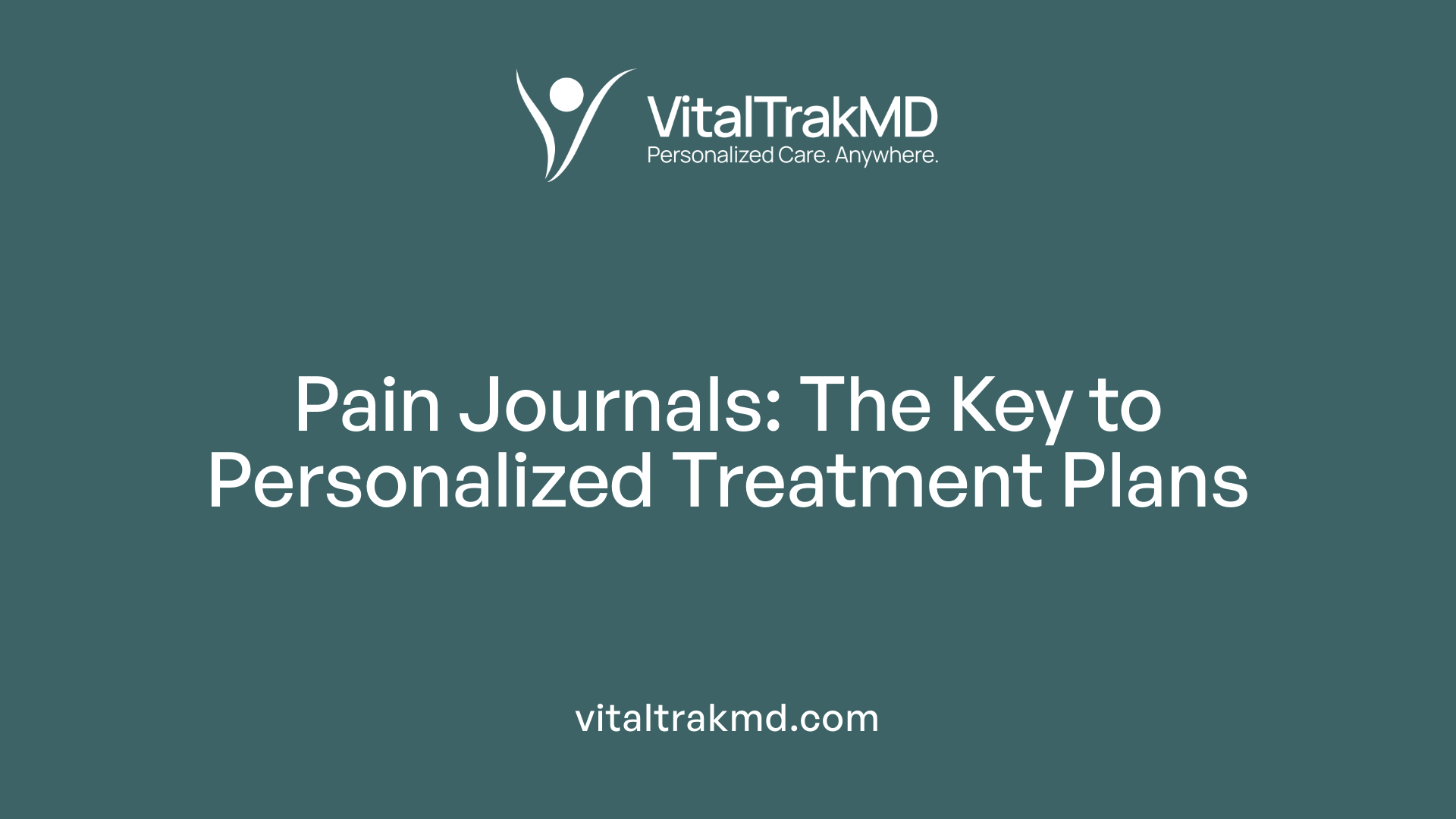
Benefits of tracking pain symptoms
Keeping a pain journal is a practical way for patients to track their pain patterns, intensity, triggers, and responses to treatments over time. This ongoing documentation helps individuals better understand their condition and recognize what activities or factors worsen or alleviate their pain.
Communicating effectively with healthcare providers
Pain journals serve as a communication bridge between patients and healthcare providers. By sharing detailed and accurate pain records, patients enable providers to gain clearer insights into their symptoms. This allows for more informed discussions and decisions during medical appointments, leading to customized treatment strategies.
Tools like Communication Cards for non-verbal or pediatric patients
For patients who are unable to express pain verbally, such as young children or non-verbal individuals, specialized tools like Communication Cards enhance their ability to convey pain levels and locations. These cards often use visuals or simple prompts, improving accuracy in pain assessment and ensuring these vulnerable groups receive appropriate care.
How documentation supports tailored treatment plans
Regular documentation through pain journals and communication tools allows healthcare providers to tailor treatments based on individual needs and changes in symptoms. This approach supports adjustments in medication, physical therapies, and complementary interventions, promoting better pain management and overall well-being.
Resources and Educational Tools to Support Home Pain Management
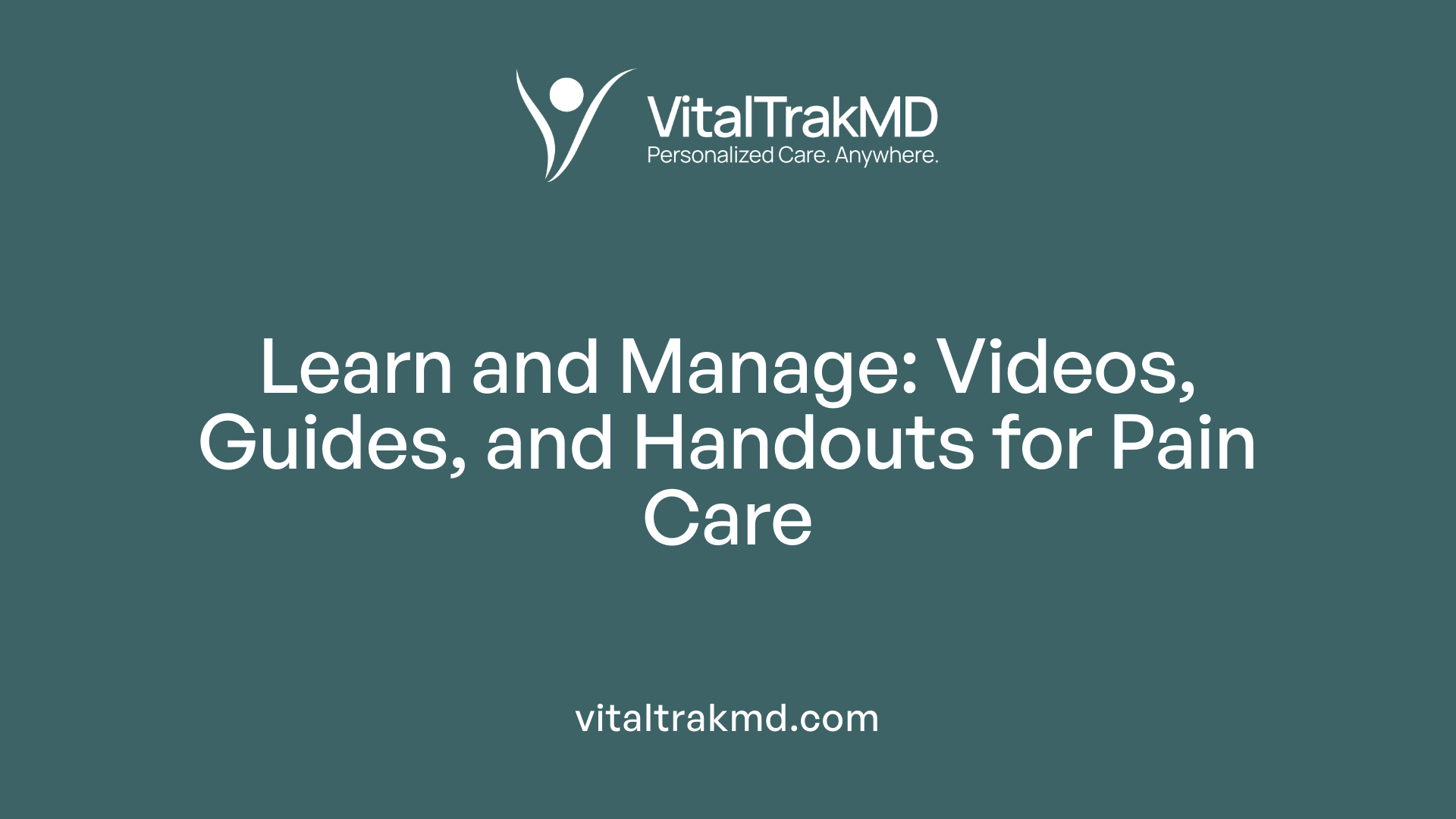
Patient Education and Activity Books for Understanding Pain
Educational books provided by the VA help patients understand why pain occurs and how certain behaviors can make pain better or worse. These books guide patients through safe self-management techniques, empowering them to take control of their pain from home.
The PAMI Pain Coach and Toolkit Guide
This guide is designed to assist healthcare providers and patients in developing personalized pain coaching programs. It offers integrative pain management options that combine both conventional and complementary therapies to improve pain control strategies.
Discharge Planning Toolkit Including Handouts and Videos
The Discharge Planning Toolkit supports healthcare providers in educating patients about managing pain at home after hospital visits. It includes easily accessible handouts and videos that cover various aspects of pain care, ensuring patients leave with practical knowledge to promote recovery.
Educational Videos on Managing Pain After Clinical Visits
To complement written materials, the VA offers educational videos that provide tips on pain management post-discharge. These videos focus on self-care strategies and explain techniques to reduce discomfort, helping patients maintain their well-being between clinical appointments.
Veterans’ Programs and Research in Non-Pharmacological Pain Treatments

What Programs Are Available at VA Facilities for Pain Management?
VA facilities provide several non-pharmacological options to help Veterans manage chronic pain. Programs like yoga and acupuncture are commonly offered, aimed at improving both physical and mental well-being. These gentle, low-impact therapies promote relaxation, flexibility, and pain relief without relying on medication.
Can Veterans Participate in Research Studies for New Treatments?
Yes, Veterans have opportunities to participate in research studies exploring innovative pain treatments. Trials often investigate non-drug approaches such as yoga and repetitive transcranial magnetic stimulation (rTMS). Participation not only contributes to advancing pain management science but also offers Veterans access to cutting-edge therapies.
What Pain Management Approach Does the VA Emphasize?
The VA emphasizes a holistic, integrative pain management approach that combines medication, physical therapies, complementary methods, and psychological support. This strategy reflects the understanding that effective relief involves addressing the physical, emotional, and social aspects of pain.
What Benefits Have Been Shown for Veterans Using These Programs?
Veterans engaged in these VA-supported programs report improvements in pain control, increased functionality, reduced medication dependence, and enhanced quality of life. Yoga and acupuncture, for instance, have demonstrated benefits in reducing chronic pain symptoms and improving overall health outcomes for Veterans.
Guidelines for Managing Pain When It Persists or Becomes Complex

Focus on Functional Improvement Over Only Pain Elimination
When pain becomes chronic and difficult to relieve fully, the goal shifts from complete pain elimination to improving daily function and quality of life. This involves maintaining activity levels at a sustainable pace, avoiding inactivity that could worsen symptoms, and learning to manage pain to reduce its interference with daily routines.
Managing Mental Health While Living With Chronic Pain
Emotional wellbeing plays a critical role in how pain is experienced. Developing coping strategies such as mindfulness meditation and engaging in hobbies or social activities can help reduce stress and improve mood. Psychological support and cognitive behavioral therapy may also be beneficial to address the emotional challenges linked to chronic pain.
Avoiding Over-Reliance on Medications
Medications can be part of pain management but should be used judiciously to avoid side effects like dependence, liver damage, or cardiovascular risks. Chronic pain medication plans require expert review to ensure safety and appropriateness. Whenever possible, combining pharmacologic treatments with physical therapies, complementary therapies such as acupuncture or massage, and nonpharmacologic options like heat/cold packs or relaxation techniques can reduce the need for medication alone.
Tailoring Treatment to Type, Location, and Patient Lifestyle
Effective pain management depends on understanding the specific type of pain, its location, and its impact on the individual's lifestyle. Treatment plans should be personalized and may include a combination of medications, physical exercise, complementary therapies, and psychological approaches. Ongoing communication with healthcare providers and use of tools like pain journals help customize care to the patient's evolving needs.
These guidelines underscore a holistic and individualized approach to managing persistent or complex pain, promoting functional improvement and mental health while minimizing medication risks.
Holistic Pain Management: Combining Modalities for Safe, Effective Care
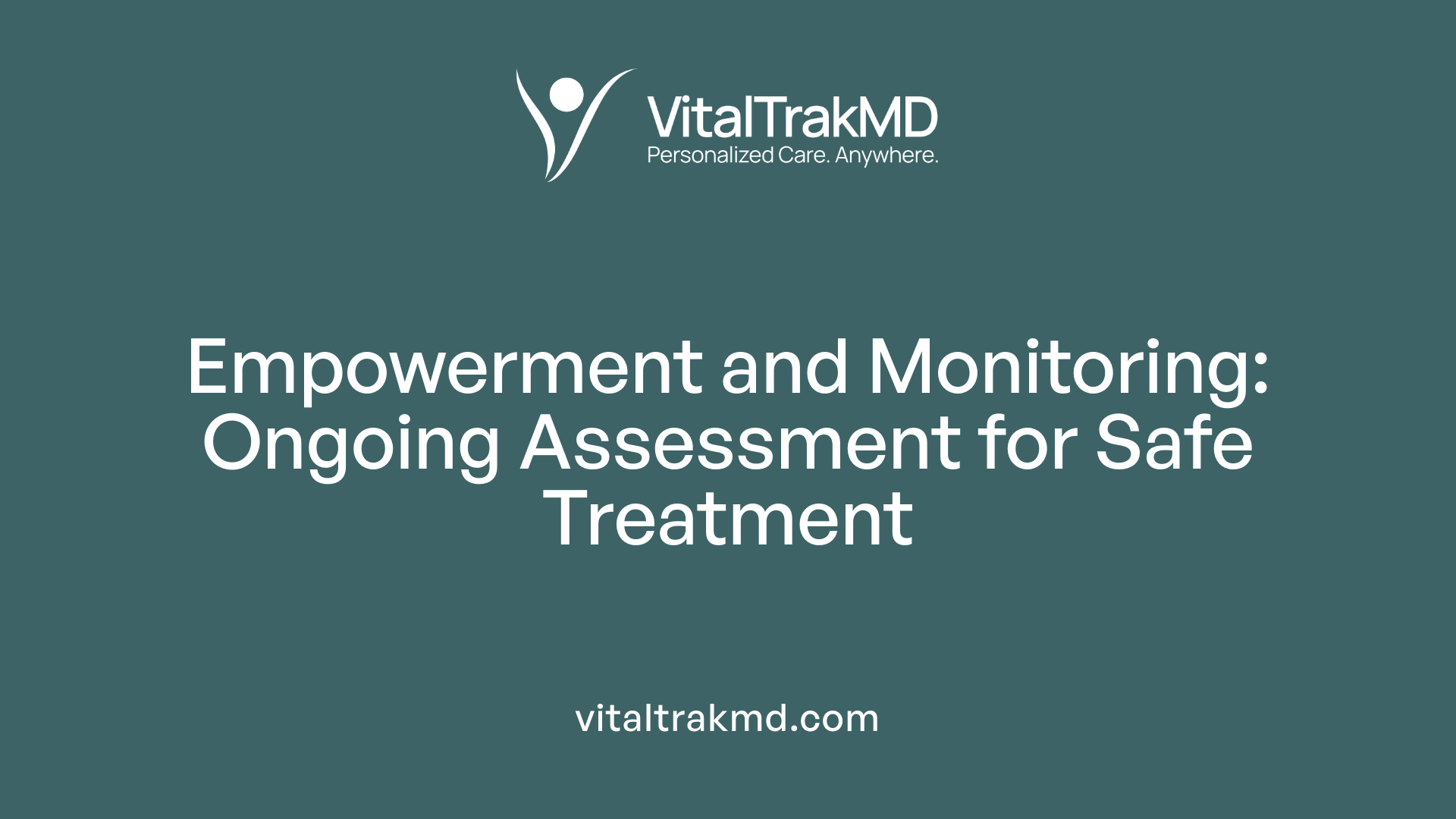
Integrating Medications, Physical, and Complementary Therapies
Managing chronic pain effectively often requires a combination of approaches tailored to an individual's needs. Medications like NSAIDs, opioids, or antidepressants may reduce inflammation, block pain signals, or alter pain perception, but must be chosen carefully by medical professionals to avoid side effects such as liver damage or dependence. In tandem, physical therapies including low-impact exercises, yoga, and acupuncture can strengthen muscles, reduce pain intensity, and improve mobility. Complementary therapies such as massage and meditation offer additional relief by relaxing muscles and reducing stress.
Role of Psychological Approaches in Comprehensive Plans
Chronic pain is closely linked to emotional well-being, and psychological techniques play a vital role in holistic care. Mindfulness practices, cognitive behavioral therapies, and keeping a pain journal enable patients to cope better with pain sensations, manage stress, and communicate symptoms clearly to healthcare providers. These methods can improve quality of life by addressing mental health alongside physical symptoms.
Monitoring for Side Effects and Adjusting Treatment
Safe pain management involves ongoing assessment of treatment effectiveness and side effects. Medications must be regularly reviewed by specialists to ensure appropriateness for long-term use and to avoid adverse outcomes like stomach ulcers or cardiovascular risks. Over-the-counter drugs require cautious use, especially in vulnerable groups such as the elderly or pregnant individuals, to prevent overdose or harmful interactions. Adjusting therapies as pain patterns or patient status change is essential to optimize outcomes.
Encouraging Patient Empowerment and Informed Decision-Making
Veterans and other patients benefit from education and resources that promote active participation in their care. Tools such as the Patient Education and Activity Book, Pain Coach Toolkit, and communication aids help patients understand their pain, explore non-pharmacological strategies, and safely manage medications at home. Engaging in social activities and research programs further supports empowerment while improving mental well-being. A holistic approach balances medical, physical, and psychological treatments to foster better control and improved function despite chronic pain.
Empowering Patients for Safe and Effective Home Pain Management
Managing pain safely at home is a multifaceted endeavor that requires a balanced combination of appropriate medication use, lifestyle modifications, integrative therapies, and psychological support. Patients are encouraged to maintain open communication with healthcare professionals, use available educational resources, and embrace holistic strategies tailored to their individual needs. With the right guidance and tools, individuals can improve their quality of life, reduce pain-related limitations, and achieve safer, more effective pain management beyond clinical settings.
References
Recent articles
Want to Feel Better and Live Healthier?
Join hundreds of patients taking control of their health with personalized care that fits their life – not the other way around.
Rated 4.8/5 by 32+ customers







